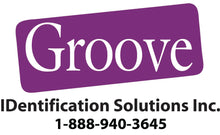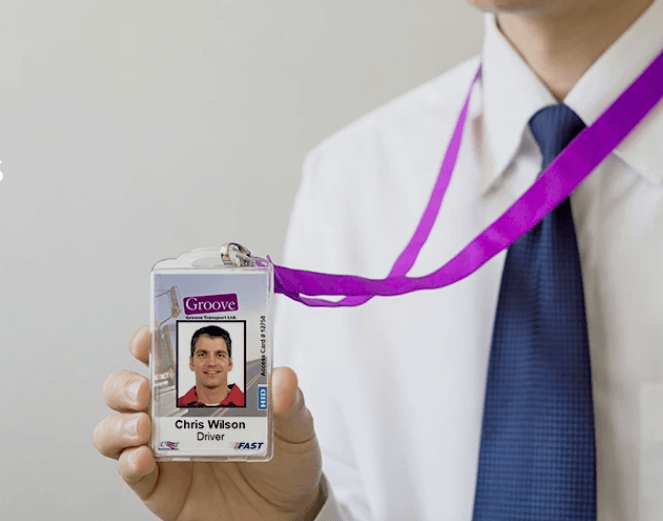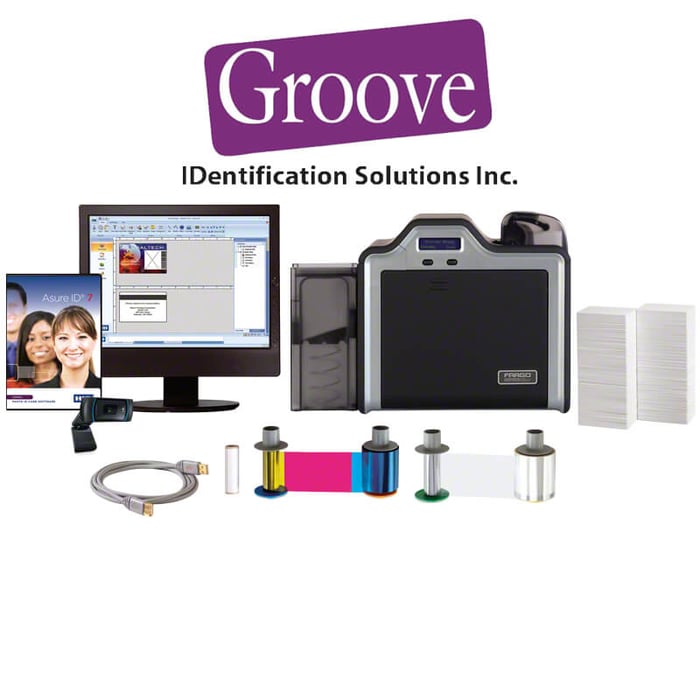More and more companies are issuing identification badges to their employees. The pandemic creates an added incentive to keep track of who is coming and going at your facility. You may also need to manage which spaces your employees can access inside your building.
If you’re one of those managers who has concluded that your employees need badges or new and improved badges, your next step is to work out how your badges should look. Taking some time to design the layout of your company’s ID badge ensures that it does everything you need it to do.
There are several things to think about when designing an ID badge. Badges have more than one purpose in an organization.

Primary Reason for Issuing ID Badges is Security
The primary reason that most companies issue ID badges is security. Still, that shouldn’t be your only goal. Badges also improve employee interaction and morale, and they can enhance professionalism while promoting your brand.
The look and feel of your ID badges can help accomplish these goals when done well. A well-designed ID card takes the following things into account.
Most organizations incorporate their logo into their badge design. That’s what makes the card feel official for both employees and customers. It also supports your company’s visual identity program.
It’s essential to work with your communications or marketing department to ensure that you follow the graphic design standards for colours, fonts and illustrations. Don’t just copy and paste it from the company website. Having a perfect imprint of your logo on the card also makes it harder to counterfeit.
Employee privacy and personal information have become vital considerations when laying out ID cards. Many health care and customer service employees operate on a first name only basis to protect staff when they’re off-duty.
You should also talk to your HR and/or legal teams to ensure your card design complies with the privacy regulations in your jurisdiction. Bear in mind, as a practical matter, that ID cards need to be, well, card-sized, so your available space for personal information is limited.
These days, photo identification is the norm with ID cards. Everyone has come to expect seeing their picture on their driver’s license, health card and passport.
Similarly, having a clear, prominent photo of an employee makes verification more straightforward and more accurate. You need to think through how large the image should be and where to place it in your design.
You may want to consider displaying the employee’s signature on the card as well. Signatures give you a second identification factor. Like your company logo, there’s something about a handwritten signature that makes a card more official.
You can lay out your card horizontally (landscape mode) or vertically (portrait mode). Most companies make this choice based on how they expect employees to wear the card.

Should it be on a lanyard around the neck or dangle down from a breast pocket or a belt? Or would you prefer to present the card laterally like a name tag to make it easier for customers to read? You’ll also need to take the orientation of any card readers you’ll be using into account.
Remember that You Can Print on Both Sides of Your Card
You should also remember that you can print on both sides of your card. Critical information can be more prominent on the front of the card, and less vital data can go on the back. The back of the card can also display a company slogan or instructions for returning lost cards.
It may seem like a bargain to print your design on less costly cards. However, you’ll find that you save money in the long run by choosing cards made with more durable materials like PVC plastic. Employees stay with companies for many years, and you want to minimize the number of times you have to reprint cards due to wear and tear.
Designing your ID card also gives you the chance to consider more advanced technologies. These might include magnetic stripes, chips or radio frequency identification (RFID). You could also build in a holographic overlay or even a fingerprint.
Taking the time to get your design right the first time will save you time, money and headaches down the road. At Groove Identification Solutions, we’re happy to work with you and your colleagues to develop an optimal design that enables all of your security and visual identity goals.
Click Here To Visit Our Website Today!
We’d love to hear about your experiences with ID badge design either as a security professional or just wearing one as an employee. Feel free to share your thoughts in the comments section below.




